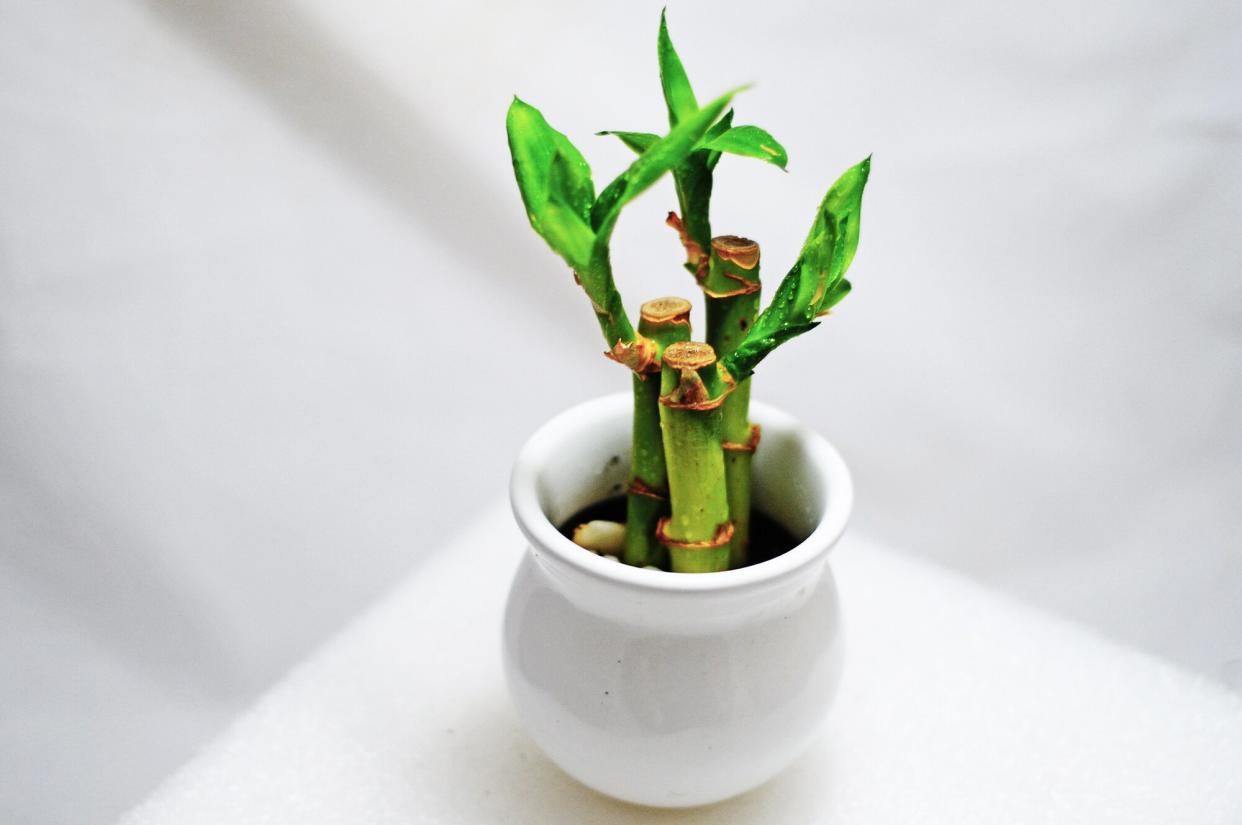How to Grow and Care for a Lucky Bamboo Plant

Getty Images
Lucky bamboo is believed to bring prosperity and good luck to its owner, and it comes in a multitude of eye-catching iterations (thanks to professional growers who train this plant into braided, twisted, or curled shapes). Though originally native to Africa, lucky bamboo typically ships from China or Taiwan.
"The most fascinating feature of lucky bamboo is that it is not, in fact, bamboo!" shares Ekta Chaudhary, gardener, and founder of green-living platform, Garden Up. "The plant we prize for its intricate, sculptural stems and long, pointed leaves is actually a type of dracaena (Dracaena sanderiana)," Jon VanZile, master gardener and author of Houseplants for a Healthy Home, adds.
Lucky bamboo is hardy and easy to grow so long as you follow a few simple expert-recommended rules. If you are a pet owner, be sure the plant is out of reach—it's toxic to animals.
Related: Learn How to Use Bamboo to Elevate Your Backyard's Most Important Entertaining Areas
How to Plant and Water a Lucky Bamboo Plant
When planted in containers, lucky bamboo can thrive in regular potting soil or water all year round. But, "most lucky bamboo today is sold as a fully aquatic plant that thrives in simple water," says VanZile. When hydrating its chlorine-sensitive roots, opt for "clean distilled or bottled water," says Chaudhary, and let the water sit out overnight or, better yet, leave it undisturbed for 24 hours in an open container (to ensure any chlorine and fluoride evaporates away) before watering your plant.
Ultimately, committing to a consistent watering schedule is key to growing healthy lucky bamboo. This includes refreshing your plant's water monthly and making "sure to keep the container topped up between water changes so the roots are always covered," VanZile says. "If the water becomes cloudy or dirty, it's time to change it."
How to Fertilize and Care for a Lucky Bamboo Plant
Lucky bamboo remains relatively small, reaching "a maximum height of about 100 centimeters," says Chaudhary; it grows "faster in well-draining, nutrient-rich soil which needs fertilization once every month." Since this plant draws nitrogen directly from its water, it has minimal fertilizer needs. Adding a drop or two "of a high-quality, balanced fertilizer when you change the water will ensure strong leaf growth," says VanZile, who recommends specialty fertilizers formulated for lucky bamboo or hydroponic systems.
As for this variety's light requirements? Intended for medium to well-lit indoor spaces, lucky bamboo grows best in "shade or bright, filtered sunlight," says Chaudhary. Lucky bamboo is more durable than you may think: it can handle "low-light conditions for long periods without dropping its leaves," says VanZile, making it the "perfect desk plants for offices and indoor settings where other plants might struggle."
Where to Buy a Lucky Bamboo Plant
"Luckily for us, the lucky bamboo is a staple in most nurseries, gardening supply stores, or just anywhere that sells live plants," says Chaudhary. When you're on the search for your own variety, "look for specimens with healthy leaves and interesting stem shapes," says VanZile, noting that "one of the great things about lucky bamboo is its ability to be trained into all sorts of shapes (you can even train it yourself if you're feeling adventurous)." If the plant outgrows its original store-bought container, you can move it into a slightly larger vessel—but, says VanZile, "do your best to keep the original stems bundled together and protect the delicate roots."

